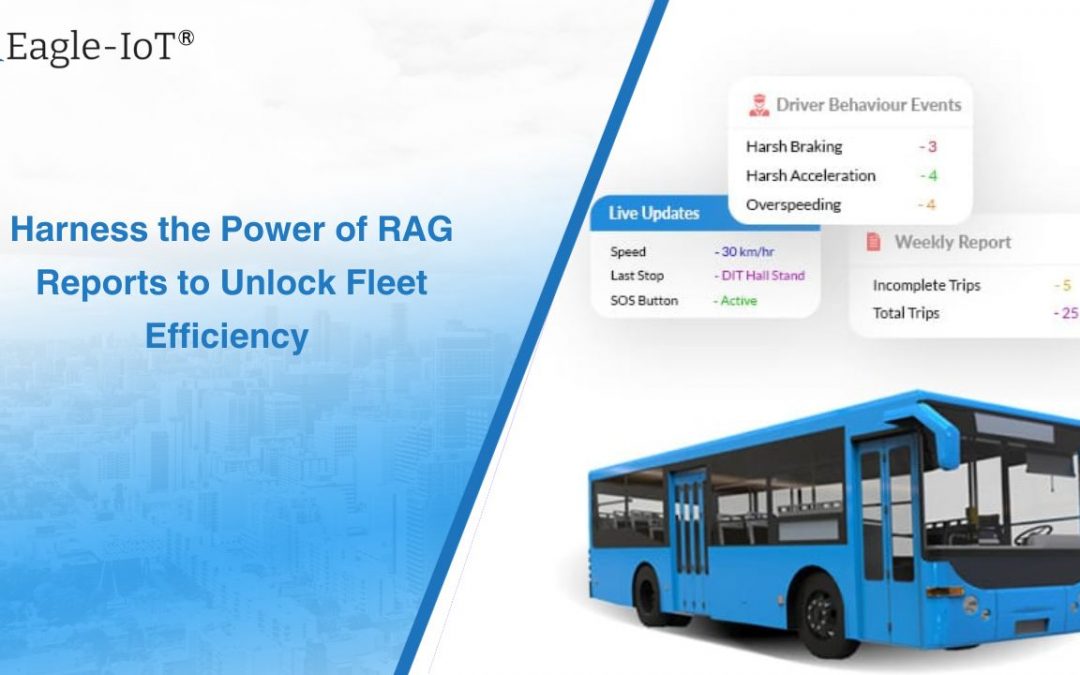Harness the Power of RAG Reports to Unlock Fleet Efficiency
In the dynamic world of fleet management, staying ahead means embracing innovative tools that enhance safety, efficiency, and overall performance. One such tool making waves in the industry is the RAG (Red, Amber, Green) Report – a comprehensive performance evaluation report designed to monitor and analyze the driving behavior of fleet drivers.
Understanding RAG Reports
The RAG Report assigns scores to drivers based on various parameters, including speed, braking, acceleration, and adherence to traffic rules. These scores are color-coded – red indicating areas that need improvement, amber for moderate performance, and green for excellent driving habits. The report provides detailed information, such as speeding events, trip duration, harsh acceleration and braking events, harsh driving instances, and total distance traveled.
Eagle-IoT Solutions presents this data in an interactive and mobile-friendly format, allowing fleet managers to easily understand the performance of each driver without extensive prior knowledge of statistical analysis.


Monitoring Driver Performance
Implementing RAG reporting offers detailed insights for fleet managers, revolutionizing their approach to driver performance monitoring. Fleet managers can leverage this data to institute trip-based scorecards, assess fuel efficiency impact, establish performance goals, foster ongoing monitoring practices, promote eco-friendly driving habits, and measure continual improvements in safe driving practices. The versatility of RAG reporting empowers fleet managers with actionable intelligence, contributing to a culture of safety, efficiency, and environmental sustainability within their fleets.
Fuel Efficiency Assessment: Analyze the impact of driver behavior on fuel efficiency, identifying areas for improvement and cost savings.
Establishing Goals: Set specific goals for drivers based on their RAG scores and track progress over time for continuous improvement.
Ongoing Monitoring: Engage drivers with continuous monitoring, providing real-time feedback and encouraging a culture of safe and efficient driving.
Promoting Eco-Driving Practices: Use RAG reports to promote eco-friendly driving habits among your fleet, contributing to environmental sustainability.
Measuring Improvements: Track improvements in safe driving habits over time, fostering a sense of achievement and motivation among drivers.
Implementing RAG reporting effectively requires a strategic approach:
Transparent Communication: Ensure drivers understand the purpose of the scorecard and its contribution to overall safety and efficiency goals.
Training and Support: Provide training sessions and resources to help drivers improve their scores and foster a positive driving culture.
Celebrating Achievements: Recognize and reward drivers who consistently exhibit safe and efficient driving habits to motivate the entire fleet.


The implementation of RAG reporting yields tangible benefits for fleet management:
Reduced Accident Rates: By addressing areas of improvement highlighted in the report, fleets can experience a reduction in accident rates.
Increased Driver Satisfaction: Continuous monitoring and transparent communication can contribute to higher driver satisfaction and morale.
To fully harness the potential of RAG reporting and gain unparalleled visibility into driver performance


